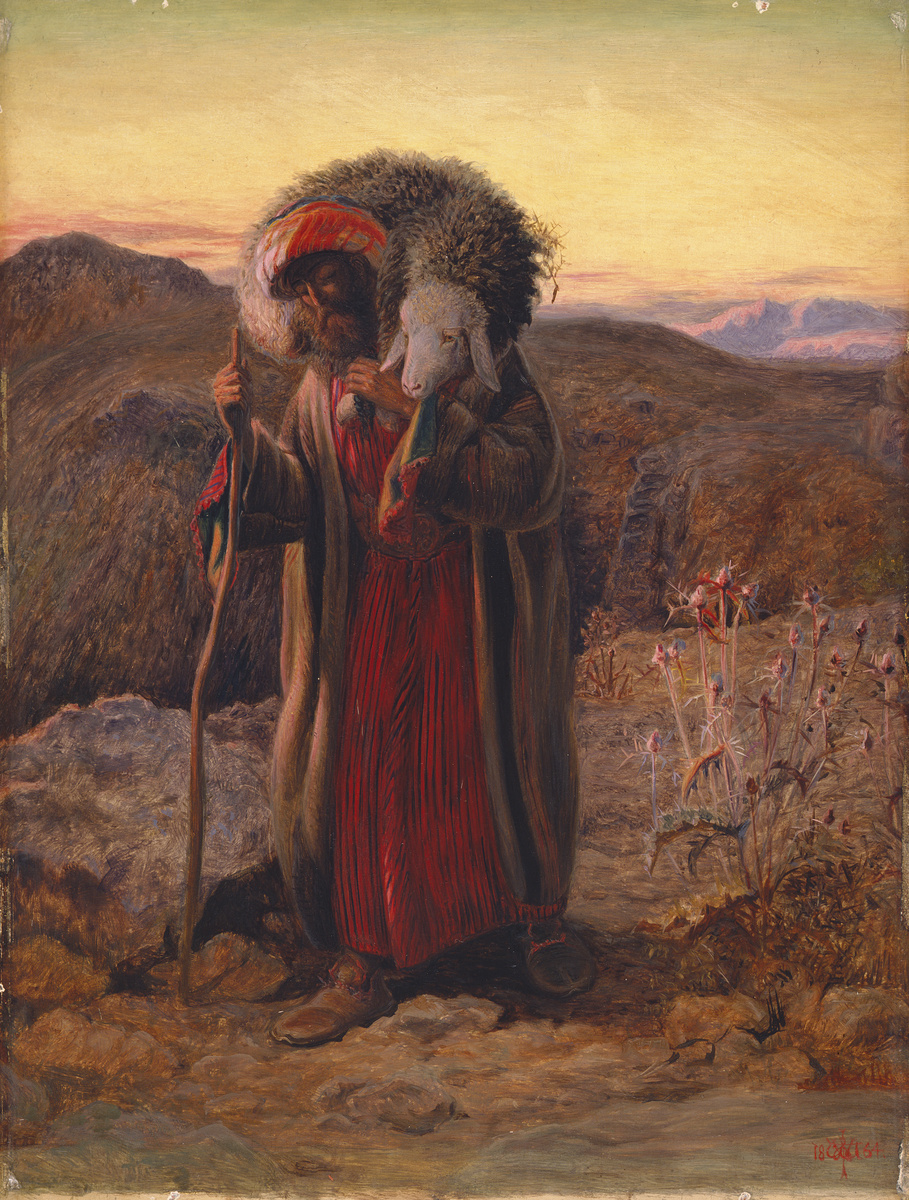The Lost Sheep
Summary
The isolated figure of a shepherd carrying a sheep over his shoulders, walking along the ridge of a rocky mountain. The shepherd is depicted as a bearded middle-aged man carrying a staff, with his head tilted slightly to the left revealing a Middle-Eastern face, his eyelids lowered in order to glance at the sheep, and wearing a red turban and long, striped robes worn with an overcoat. Growing to the right of the figure, within the barren landscape, is a tall thistle with pronounced thorns. The entire scene is bathed in the warm, red glow characteristic of evening light. To the left of the figure, the mountain appears to fall away sharply with the ridge curving round in an arc to the left. On the right horizon are the peaks of more distant mountains depicted in pink and mauve tones. The sky is yellow with streaks of pink, orange and blue cloud on the horizon. The gilt wooden frame has two friezes with a textured gesso finish, separated by plain beading. There are four decorative ovals on the inner frieze, at the centre of each side. The slip frame is gilt wood with rounded sight corners.
Display Label
Gallery text panel The Pre-Raphaelites in their Time Britain's first and best-known radical art movement emerged from within the Royal Academy in 1848. Its original members were rebellious art students who were disillusioned with contemporary practice. They looked back to Italian art before Raphael, seeing the pre-1500 period as one of great sincerity. They called themselves the Pre-Raphaelite Brotherhood. In an age of rapid industrial and urban expansion, Pre-Raphaelite artists like Rossetti, Hunt and Millais, and pioneering design reformers such as William Morris, sought a return to pre-industrial values of art and design in truth to nature and materials, and good workmanship. In addition, the arts of the Middle Ages and Middle East were important sources of stylistic inspiration. The Bible, literature and contemporary life were preferred over subjects derived from classical mythology. The Brotherhood also rejected contrived studio lighting and took canvases outside to paint directly from nature. Although attempting to convey exactly what they saw, they created a heightened reality of dream-like intensity with minute details and bright, dazzling colours. Their art was a new kind of history painting for a new age.
Object Name
The Lost Sheep
Creators Name
Date Created
1864
Dimensions
Panel: 33.1cm x 25.1cm
Frame: 59cm x 51.6cm
accession number
1920.94
Place of creation
England
Support
panel (mahogany)
Medium
oil paint
Legal
© Manchester Art Gallery

